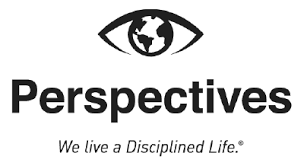Any civilization’s foundational pillar is education, and the organizations in charge of disseminating information impact how society will develop. Schools are the main means by which the general populace is educated in most nations.
Nevertheless, questions frequently arise regarding the nature of schools and where they fit into the larger scheme of public administration. One such question is: Are schools public sector organizations?
This blog post will explore this difficult topic and examine the many features of schools as public sector organizations.
We will also discuss how this categorization affects schools’ operation and accountability if they are classified as public sector organizations.
Table of contents
- Public Sector Organizations Definition
- What is the Public Sector?
- About Public Schools
- Are Schools Public Sector Organisations
- What are the Effects of Classifying Public Schools as a Public Sector?
- How are Public Schools Classified in Different Countries?
- How Do Public Sector and Private Sector Schools Differ From One Another?
- FAQs
- Are Schools Public Sector Organisations: conclusion
- References
- Recommendations
Public Sector Organizations Definition
Before going any further with the exact classification of schools, it’s critical to comprehend what a public sector institution is.
Public sector organizations are those that the government finances and regulates to deliver a range of services and achieve particular societal goals.
Taxes or government grants sponsor these businesses and are in charge of providing goods and services to the general population. Policies, rules, and laws established by the government or other relevant authorities often serve as the direction for public sector organizations.
Numerous institutions, including government agencies, public hospitals, and public schools, fall under the public sector umbrella.
Even though this article focuses on schools, it’s crucial to understand that they represent only a small portion of the overall public sector panorama.
Read Also: Do Private Schools Do SATs in 2024
What is the Public Sector?
The public sector refers to the part of the economy owned and operated by the government. It encompasses various organizations and institutions, such as federal, state, and local governments, and publicly funded entities like schools, hospitals, and police departments. This sector is vital in ensuring that essential services are available to citizens.
One key characteristic of the public sector is its focus on serving the public interest rather than pursuing profits. Unlike private businesses that aim to maximize shareholder value, government-owned entities prioritize providing services that benefit society. This emphasis on serving the common good sets the public sector apart from other sectors of the economy.
Another remarkable aspect of the public sector is its accountability to taxpayers and citizens. These organizations are primarily funded through taxes or government revenue sources, so they face greater scrutiny regarding financial management and decision-making processes.
The transparency demanded from government entities ensures that resources are allocated efficiently and fairly across various areas, such as infrastructure development, social welfare programs, and healthcare services.
Understanding these fundamental aspects helps us appreciate how essential the public sector is for our societies. It enables us to collectively address issues that transcend individual interests by providing necessary services without profit-driven motives while being accountable to those it serves, aiming for societal progress rather than generating wealth for shareholders alone.
About Public Schools
Public education is often seen as a fundamental right, and governments ensure that all individuals have access to a high-quality education. To carry out this duty, governments construct and manage public schools.
Public schools are educational establishments that receive funding, oversight, and, frequently, direct control from the government. They must adhere to a set of norms and regulations established by educational authorities and provide instruction to pupils from various backgrounds without discrimination.
Also, they are typically accessible to all students in a particular geographic area, regardless of socioeconomic status. This is known as “open access.”
Public schools are primarily non-profit organizations, with education as their main priority rather than making a profit.
Furthermore, public schools’ governance and management structures can differ significantly, although they generally share some traits. While some public schools may be more autonomous, others may be run by regional school boards or districts. The degree of autonomy is frequently influenced by the region’s or nation’s unique educational laws and practices.
Read Also: How Do You Get A Scholarship For Private Schools?
Are Schools Public Sector Organisations
On the surface, it may appear simple to determine whether public schools are public sector organizations. After all, they are financed by the government, are overseen by the government, and have a public function.
However, complexities and subtleties are involved in classifying public schools as public sector companies.
Arguments in Favor of Schools Being a Public sector
Government Funding: Public schools are a prime example of a public sector entity that significantly relies on government funding. Public educational services are provided using this tax-funded revenue.
Public objective: The community’s education is the primary public objective for which public schools were formed. This aligns with the larger goal of public sector institutions: advancing the common good.
Government Oversight: The government is responsible for overseeing public schools, including ensuring that academic standards, curriculum requirements, and legal requirements are followed—a crucial aspect of public sector organizations.
Arguments Against Schools Being a Public Sector
Here are some of the critics:
Autonomy: Although the government funds public schools, some contend that their autonomy sets them apart from other organizations in the public sector. Public schools occasionally have local school boards or other governing bodies with some degree of decision-making independence.
Public schools are primarily non-profit organizations that prioritize education over financial gain. This characteristic distinguishes them from some public sector organizations that engage in revenue-generating activities.
Public schools frequently display a hybrid nature, fusing aspects of public and private organizations. For instance, they could collaborate with private businesses to provide particular services or initiatives.
Various Governance: Public school governance models differ greatly from one place to another. While others may give local schools or districts more autonomy, some may have more centralized control.
What are the Effects of Classifying Public Schools as a Public Sector?
Numerous ramifications for public schools’ functioning and the larger field of education result from their designation as public sector enterprises.
Finances and Planning
Public schools are qualified for government funding and budgetary allotments if classified as public sector organizations. This money is crucial for paying teachers’ wages, developing the infrastructure, and providing other important parts of the educational system. Public school funding is frequently a point of contention in government budget discussions since it directly affects the standard of instruction delivered.
Responsibility and openness
Public schools are subject to a greater standard of accountability and transparency than public sector enterprises. They must conduct themselves in a way that may be observed by government officials, parents, and the general public. This responsibility covers all aspects of financial management, conformity to academic standards, and general educational quality.
Governing and Making Decisions
Public schools’ governance and decision-making frameworks may be impacted by their designation as public sector institutions. Local school management in certain areas is largely under the direction of school boards or districts. In other areas, it may be primarily controlled by centralized government organizations. The harmony between regional autonomy and central planning may affect how adaptable and responsive the educational system is.
Educational Reforms and Policies
Public school classification is directly related to government education policies and reforms. When schools are seen as public sector enterprises, they are more directly impacted by government policies regarding curriculum, assessment, teacher certification, and other areas of education. Changes in the government’s priorities and policies can significantly impact the operations of public schools and the teaching they deliver.
Access and Equity
Access to education for all pupils, regardless of background, is one of the fundamental tenets of public education. Recognizing schools as public sector institutions strengthens the commitment to ensuring that education is available to all, helping to close educational opportunity gaps.
Read ALSO: What are Free Schools and Its Purpose in UK?
How are Public Schools Classified in Different Countries?
Schools may be categorized differently in different countries as public sector organizations due to variances in governance models and educational ideologies. Here are some global viewpoints on this topic:
The United States
Public schools are frequently seen as public sector enterprises in the US. They must follow state and federal educational requirements, get government financing, and be overseen by the government. However, the independence and local control levels can differ greatly between states and school districts.
British Empire
The four countries comprising the United Kingdom—England, Scotland, Wales, and Northern Ireland—have their own education systems and policies. In these countries, publicly supported schools are regarded as public sector institutions. However, there are differences in governance models and pedagogical strategies.
Finland
Finland’s publicly funded and provided education system is frequently highlighted as an example. Finland places a significant focus on equity, quality, and the professionalism of teachers in public schools, which are seen as an essential component of the public sector.
Sweden
Sweden has tested several school choice schemes, allowing for a combination of publicly supported yet privately operated schools. Because these institutions receive public funds while maintaining a high level of operational autonomy, this has raised questions about whether or not they should be considered public sector entities.
How Do Public Sector and Private Sector Schools Differ From One Another?
The considerable disparities between public and private schools span several areas, including ownership, funding, governance, admissions procedures, curricula, instructor credentials, and more. The differences between these two categories of educational institutions are broken down in depth below:
Possession
Public Sector Schools: The government, whether at the federal, state, or municipal level, owns and runs public sector schools. They are regarded as public assets, and the government is in charge of managing them.
Private Sector Schools: Private people, groups, or institutions often own and run private sector schools. They are frequently operated as corporations or charitable organizations and are not government-owned.
Finances
Schools in the public sector: Most public schools’ funding comes from the government, including tax dollars. Government budgets support their operational costs, teacher salaries, infrastructure improvement, and instructional initiatives.
Private Sector Schools: Tuition fees paid by students’ families, endowments, donations, and occasionally government vouchers or subsidies are just a few of the funding options available to private schools. They have more financial freedom and can levy tuition fees to defray expenses.
Admission Regulations
Public Sector Schools: Students who live within a certain geographic border have the right to attend public schools. These schools normally follow a neighborhood or catchment area enrollment policy and don’t choose students based on their academic standing or other factors.
Schools in the private sector: Private schools frequently have strict admission requirements. They can select students based on their academic performance, during interviews, on tests, or using other criteria. Certain private schools have competitive admissions processes.
Requirements for Teachers
Public Sector Schools: Generally, public school teachers must achieve government-set standards for certification and qualification. These requirements guarantee that instructors possess the qualifications and training to work in a public school.
Schools in the private sector may have varying standards for teacher certification. Although many private schools also employ qualified teachers, some might have more latitude when selecting candidates with specialized knowledge or experience in particular subjects.
Resources and class sizes.
Public Sector Schools: Due to budgetary restrictions and high student enrollments, public school class sizes can vary but are frequently higher. The amount of individualized attention pupils receive may impact the teacher-to-student ratio.
Private Sector Schools: Smaller class sizes are a common feature of private schools, which can result in more individualized education and intimate interactions between teachers and students. In private institutions, resources could also be more readily available.
Resources:
Public Sector Schools: Public school facilities can be in a wide range of conditions. While some might have up-to-date, well-kept buildings, others might need help with deteriorating infrastructure.
Private Private schools frequently invest in their physical plant to have newer structures, better-equipped classrooms, and improved learning environments.
Read ALSO: Top 12 Pre-University Summer Schools In The UK
FAQs
Yes, schools are generally considered public sector organizations because the government funds and manages them.
Public sector schools are owned and operated by the government at various levels, such as federal, state, or local governments.
The main objective of public sector schools is to provide free education to all children within their jurisdiction and ensure equal access to quality education.
Private schools are not considered public sector organizations as they are privately owned and funded by tuition fees or donations.
Public sector schools are primarily funded through government budgets allocated for education purposes. They may also receive additional funds from grants or subsidies.
Are Schools Public Sector Organisations: conclusion
Public schools’ inclusion in the category of public sector organizations is a nuanced and situation-specific matter. Even though there are strong grounds in favour of this classification, the degree of autonomy, the nature of the governance, and the diversity of educational policies can make it a complex subject.
Regardless of their classification, public schools are essential to society because they give the local population a high-quality education.
The public interest continues to be at the forefront of public education, and governments must ensure that schools carry out their responsibilities to educate future generations. Due to their evident impact on society and students’ lives, public schools are a focus of ongoing discussion and scrutiny in education policy, whether or not they are deemed public sector entities.
References
Recommendations
- Charter Schools VS Public Schools: Differences, Similarities in 2024
- Best Online Public High Schools in Michigan
- 15 Esthetician Schools Online: Courses, Schools & Certification
- How Do You Get A Scholarship For Private Schools?
- Private Schools Charitable Status: Do State Schools Have Charitable Status?




